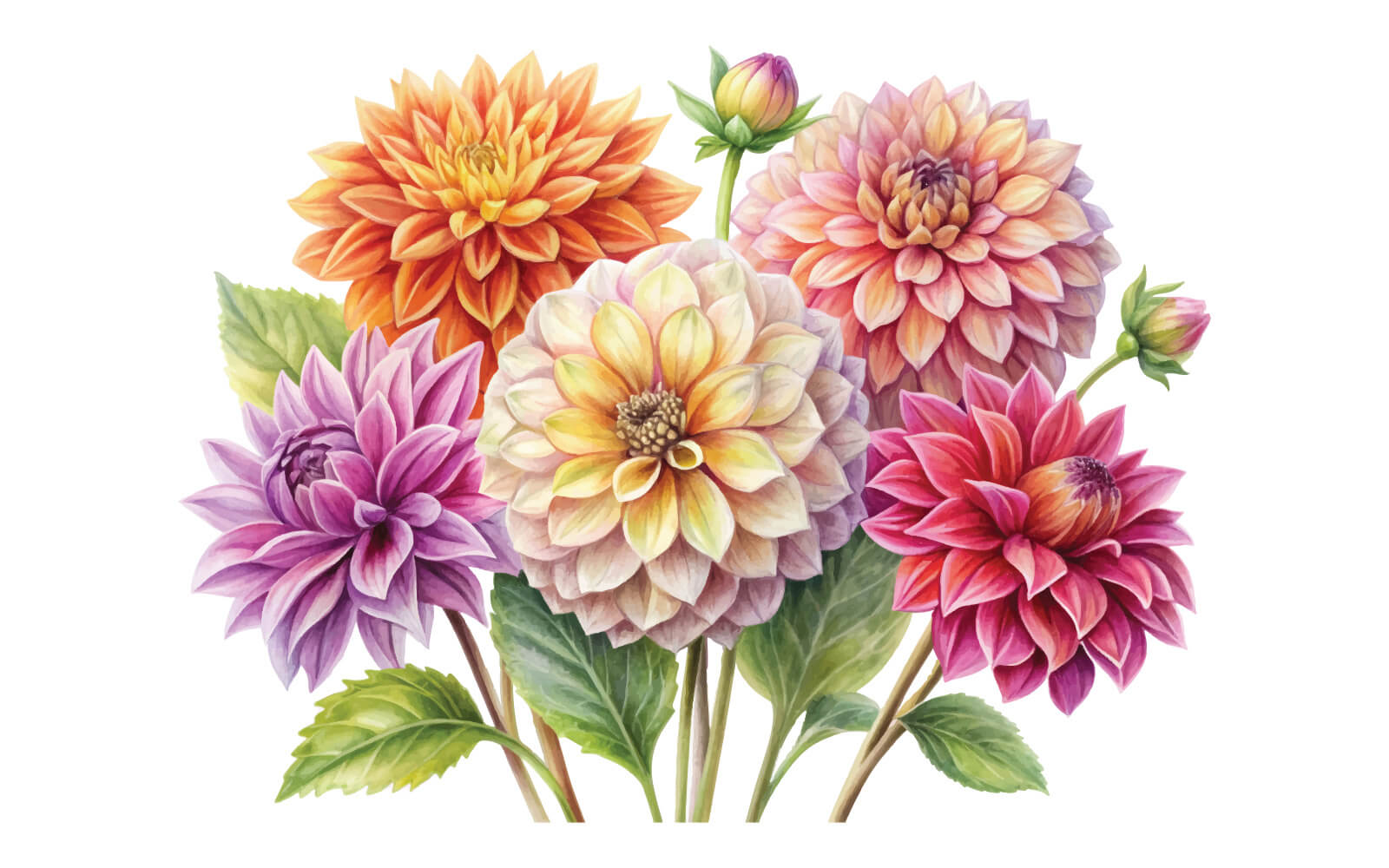Home & Living
How to Grow Dahlias that Dazzle
Experts from Two Boots Farm in Hampstead share tips on caring for this magical, stunning flora.

Something about the word dahlia instantly evokes mystery and beauty. These striking, vibrant flowers—the national flower of Mexico—can grow to the size of dinner plates and are regularly spotted on Pinterest boards. And it turns out they have an interesting origin story, too.
In 1872, a box of dahlia tubers was sent from Mexico to Holland. Only one survived the long journey, but it produced a red bloom so exquisite it kicked off dahlia mania in Europe However, according to the Dahlia Society of Victoria, the flowers were around long before then. They were used by the Aztecs as a food source, like potatoes are today.
In 1570, King Phillip II of Spain sent a well-known physician of the court on a scientific expedition of the Americas. Among his findings in South America were dahlias, then called Acocotli and Cocoxochitl. (They were eventually renamed for Swedish botanist Andreas Dahl in the late 18th century.)
Dahlias remained in fashion for more than 100 years—in both Europe and the U.S.—until tastes changed, as they inevitably do. But now, they have come full circle.
Today, there are more than 50,000 different varieties in different colors and shapes—from the opulent Dinnerplate dahlias to the sweet, spherical Pompons—growing anywhere from one foot to six feet tall.
“They’re just really stunning and striking and dramatic,” says Amelia Hazen, the farm manager at Two Boots Farm, a Hampstead-based grower. “There are so many different colors. I think that the balls [variety] are really cool-looking; the way the petals lay is really beautiful.”
Dahlias are easy plants to grow and produce beautiful flowers from mid-summer to fall. To plant, the first step is to buy dahlia tubers. Tubers are swollen roots that live underground and can produce three to 10 new tubers in one year.
Elisa Lane, owner of Two Boots Farm, says it’s best to buy from operations like Sunny Meadows Farm and Triple Wren Farm. “Instead of getting them from large distributors, I would say get them from small independent farms,” says Lane. “There have been some studies that show that the ones coming from the large companies are infected with gall [a bacterial disease].”
Dahlias can be planted in the ground as late as mid-June and as early as mid-May, when the ground is warm and there is little chance of frost.
“We usually plant them in May around Mother’s Day,” notes Lane. “That’s when we’ll put them in the ground, just like a tomato plant, and then they’ll die by the fall’s killing frost.”
According to Lane, you want to choose an area with full sun coverage (at least six hours) and well-drained soil. Then, dig a hole so that the top of the tuber is about one inch below the top of the soil, with the “eyes” of the tuber facing up. Space the tubers a foot apart. Water after you’ve planted and then wait until the tuber sprouts just above the surface to water again. (Only water once you see sprouts above the soil, as too much watering can cause the tubers to rot.)
After that, Lane says to water sparingly; they need very little water until they reach about six inches tall. You can also plant dahlias in containers. This can be beneficial if you want to get a jump start on growing them for the season without having to wait for the last frost.
According to The American Dahlia Society, use heavyweight, sturdy pots. Make sure the pot has lots of holes for drainage because you want water to pass through the pot and not collect at the bottom. Dig a hole in your soil and place the dahlia tuber inside. Make sure you keep the pot in a warm, sunny spot or use plant lights. When it’s consistently warm enough, you can transfer your dahlia to the ground outside. If you plan to grow your dahlia to full size in a container, make sure it’s large enough—at least a foot deep.
At the end of the season, frost will kill the plant and leave you with a decision: You can dig up and store the dahlia tubers for next year (although over-wintering can be a challenge) or simply buy more tubers the next year.
“They are so productive in the fall season and they’re bright and beautiful and go really hard up until frost,” Lane says. “They’re the flowers that are the last hurrah of the growing season.”